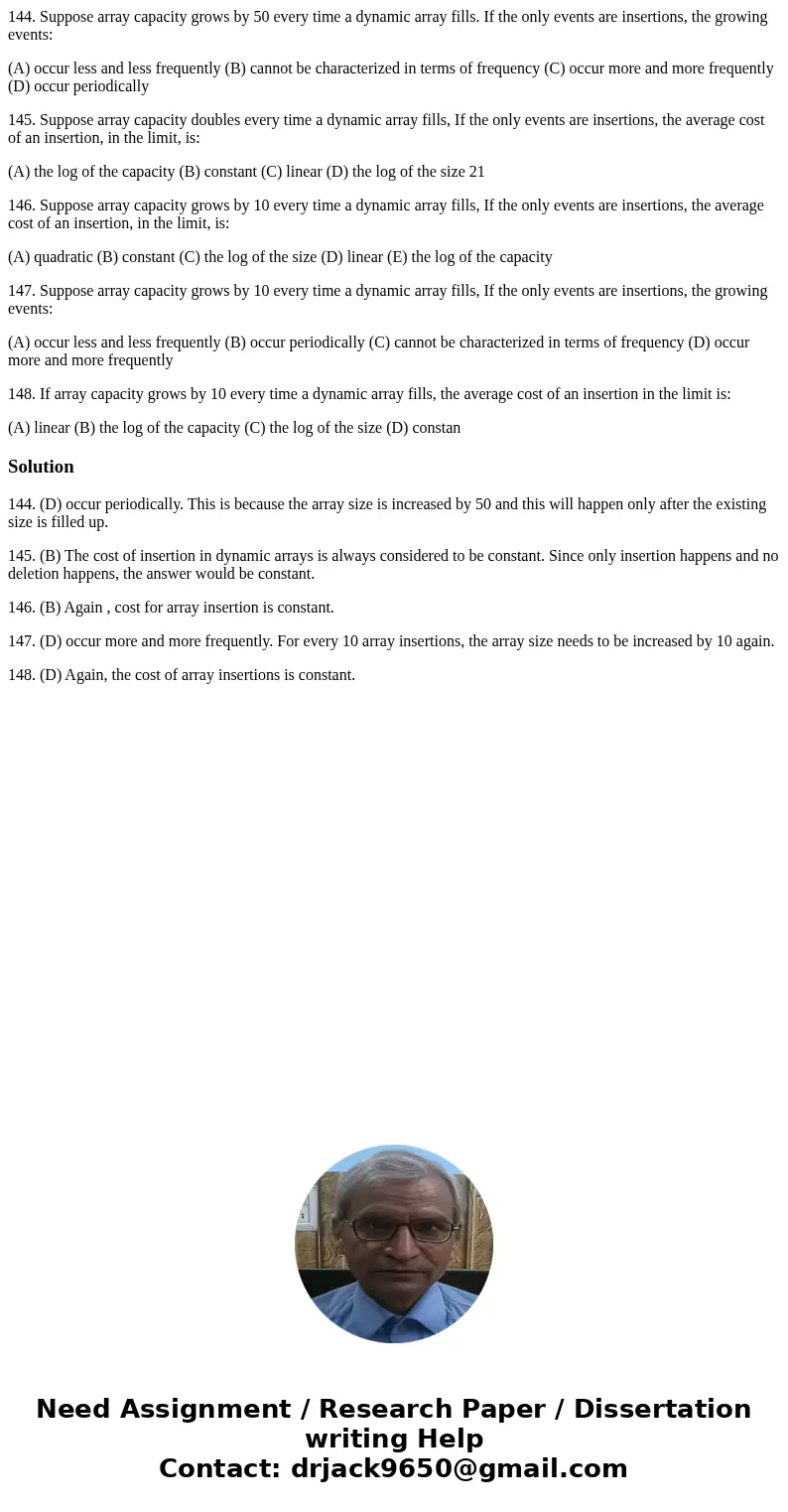144 Suppose array capacity grows by 50 every time a dynamic
144. Suppose array capacity grows by 50 every time a dynamic array fills. If the only events are insertions, the growing events:
(A) occur less and less frequently (B) cannot be characterized in terms of frequency (C) occur more and more frequently (D) occur periodically
145. Suppose array capacity doubles every time a dynamic array fills, If the only events are insertions, the average cost of an insertion, in the limit, is:
(A) the log of the capacity (B) constant (C) linear (D) the log of the size 21
146. Suppose array capacity grows by 10 every time a dynamic array fills, If the only events are insertions, the average cost of an insertion, in the limit, is:
(A) quadratic (B) constant (C) the log of the size (D) linear (E) the log of the capacity
147. Suppose array capacity grows by 10 every time a dynamic array fills, If the only events are insertions, the growing events:
(A) occur less and less frequently (B) occur periodically (C) cannot be characterized in terms of frequency (D) occur more and more frequently
148. If array capacity grows by 10 every time a dynamic array fills, the average cost of an insertion in the limit is:
(A) linear (B) the log of the capacity (C) the log of the size (D) constan
Solution
144. (D) occur periodically. This is because the array size is increased by 50 and this will happen only after the existing size is filled up.
145. (B) The cost of insertion in dynamic arrays is always considered to be constant. Since only insertion happens and no deletion happens, the answer would be constant.
146. (B) Again , cost for array insertion is constant.
147. (D) occur more and more frequently. For every 10 array insertions, the array size needs to be increased by 10 again.
148. (D) Again, the cost of array insertions is constant.

 Homework Sourse
Homework Sourse